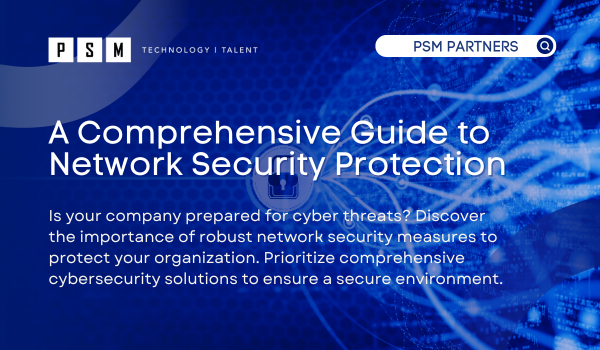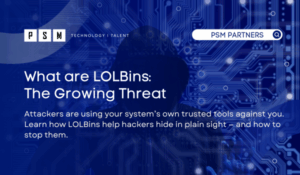Table of Contents
ToggleIs your company equipped with effective cybersecurity measures to prevent cyber threats? The use of various network security tools is crucial to protect against cyber threats. A study reveals that over 77 percent of organizations lack an incident response plan organization wide. This concerning statistic underscores the unpreparedness of most companies in the event of a cyber-attack. It’s imperative for companies to prioritize the development of a proactive strategy to mitigate these risks effectively. To confront this alarming statistic, businesses must prioritize the implementation of robust network security measures as part of their cybersecurity strategy. Investing in comprehensive cybersecurity solutions is essential to maintain a secure environment and maintain trust among customers and stakeholders.
What is Network Security and How Does it Work
Network security refers to the measures a company takes to safeguard its hardware and software data and network from modification, unauthorized access, or misuse. Network security work involves multiple layers of defense mechanisms across networks, including the use of hardware and software tools, policies, and controls to prevent unauthorized access and protect the network from exploits and threats. Security protocols are an essential part of these defense mechanisms, ensuring that data is transmitted securely and access is controlled. It is crucial to employ robust network security measures to protect against a variety of cyber threats and maintain customer trust. When a company adopts a multi-layered approach to network security and leverages a variety of tools, protocols, and techniques, they can mitigate the risk of security incidents, protect sensitive data, and ensure the continued success and resilience of their operations in an increasingly interconnected world. Optimizing network performance is also a crucial aspect of network security, as it helps in preventing costly losses from data breaches and reducing overhead expenses.

Benefits of Network Security
Securing network infrastructure is crucial for protecting client data and sensitive information, as well as ensuring the integrity of shared data. A well-designed network security solution not only reduces operational costs but also protects companies from the financial impacts of security incidents. Providing authorized access to systems, applications, and data is essential for continuous business operations and the efficient delivery of services and products to customers. Here are five significant benefits of implementing network security measures:
Protection of sensitive data: Networks often transmit sensitive data such as personal data, financial records, intellectual property, and confidential business information. Utilizing network security safeguards this data from unauthorized access, theft, or manipulation.
Prevention of unauthorized access: Network security solutions such as firewalls, authentication protocols, and access controls effectively block unauthorized users from accessing sensitive data.
Maintaining business continuity: Cyberattacks like ransomware and malware can disrupt network operations and cause downtime. Implementing effective network security measures reduces the impact of such attacks by protecting against malicious software like trojans and spyware.
Protection against cyber threats: With the increasing sophistication and frequency of cyber threats, robust network security is essential. Effective network security measures are needed to detect, prevent, and respond to these threats rapidly. Additionally, securing mobile devices is crucial to prevent unauthorized access and data leaks.
Compliance with regulations and standards: There are numerous industries, like healthcare, financial, legal, and manufacturing, that must comply with regulations, like GDPR, HIPAA, and PCI-DSS, that govern data security. The implementation of comprehensive network security measures ensures that these regulations are met.
Understanding the Types of Network Security Protections and Network Access Control

It is essential for companies to effectively protect their digital assets and infrastructure against cyber threats. Cybersecurity threats are a primary reason for needing various types of network security protections. By acknowledging various types of network security protections, organizations can tailor their protections to address specific vulnerabilities. This approach not only strengthens their overall security posture but also enhances their ability to detect, prevent, and respond to cyber threats effectively. Among the countless network security protections available, companies should focus on familiarizing themselves with fifteen key measures. The importance of using various security tools to create a secure network environment cannot be overstated:
Firewall: A firewall is a network security device or software that monitors and controls incoming and outgoing network traffic based on predetermined security rules to protect against unauthorized access and cyber threats. It can be used as hardware or software.
Security Information and Event Management (SIEM): A SIEM system collects, analyzes, and analyzes data from various sources to detect, alert, and respond to potential threats in real-time. It also provides centralized log management, compliance reporting, and forensic analysis to enhance cybersecurity and incident response capabilities.
Hyperscale Network Security: Hyperscale Network Security involves scalable, automated measures to safeguard large-scale computing environments such as cloud data centers, ensuring seamless threat detection, response, and network segmentation.
Email Security: Email security applications prevent these attacks and manage outbound messages to prevent sensitive data loss.
Data Loss Prevention (DLP): DLP technology protects sensitive information from accidental leaks outside the network by monitoring and controlling data flow. It employs software tools and policies to detect and prevent unauthorized access to confidential data, enhancing security and compliance measures in companies.
Network Segmentation: Network segmentation involves dividing a network into smaller subnetworks to minimize the impact of a security incident.
Sandboxing: Sandboxing is a cybersecurity technique that allows security analysts to analyze software actions without risking damage, enabling informed decisions on potential threats.
Intrusion Detection Prevention Systems (IDPS): An IDPS actively scans network traffic to block cyberattacks in real-time. This system also analyzes patterns or signatures to detect threats, alert administrators, and take action to enhance overall security. Intrusion prevention systems can detect and prevent network security attacks such as brute force attacks, denial of service attacks, and exploits of known vulnerabilities.
Cloud Network Security: Modern data centers require flexible and innovative security solutions to keep pace with the migration of applications and workloads to the cloud.
Virtual Private Networks (VPNs): A virtual private network is a tool that creates a secure connection over the internet, encrypting your data and hiding your IP address to ensure privacy and anonymity online. It allows individuals to bypass geographical restrictions and access blocked content while also providing a secure method for remote access to corporate networks.
Authentication and Access Control: Authentication verifies the identity of users or systems, typically through passwords or biometrics, while access control regulates their permissions to view or use resources, often based on roles or permissions granted. Network access control regulates and enforces security rules on all devices connecting to an organization’s network, protecting against external threats and breaches.
Zero Trust Network Access (ZTNA): Zero Trust Network Access is a security framework that grants access based on strict controls, regardless of user location. It ensures that individuals are only able to access the necessary resources, minimizing the risk of unauthorized incidents within the network.
Web Security: A comprehensive web security solution controls web use within an organization, blocks access to malicious websites, and prevents web-based threats.
What a Robust Security Network and Intrusion Prevention System Can Shield Companies From
A comprehensive, multi-layered approach to network security is essential to protect against the ever-evolving landscape of cyber threats. Using various network security tools can significantly enhance the overall cybersecurity posture and prevent security breaches. By integrating a variety of security measures, companies can develop a robust framework that enhances their digital assets and safeguards against potential incidents. This proactive approach not only enhances resilience, but also reduces the risk of debilitating attacks such as Dos/DDoS, insider threat’s, viruses, worms, Trojan horses, ransomware, and adware thereby enhancing overall cybersecurity posture. Furthermore, it enhances trust among stakeholders and customers, fostering trust in the company’s commitment to cybersecurity best practices. By prioritizing a multi-faceted security posture, companies can navigate the digital landscape with greater confidence, safeguarding their assets and preserving business continuity.
Boost Your Company’s Network Security with PSM Partners' Expert Solutions
At PSM, we offer managed IT security services in which we will take over the implementation, maintenance, and monitoring of your cybersecurity. Our services are designed to enhance your overall security posture, ensuring comprehensive protection. We provide a range of network security tools to protect against cyber threats. We will take the time to understand the unique security needs for your IT system and work with you to form and implement security solutions that will protect your system. As your cybersecurity service provider, we will form a well-rounded strategy with the best technologies and methods to protect your IT system from malware, breaches, and other events. Our highly trained cybersecurity professionals will implement multi-layer security solutions to simplify and enhance the security of your system. We will also audit and assess your network security to ensure that you are always protected. If you would like to learn more about our managed services, or cybersecurity offerings, contact us today.
Related Insights
What are LOLBins: The Growing Threat
Cybercriminals are becoming increasingly clever at turning everyday tools into...
Read MoreUpcoming Cybersecurity Events in 2026
As technology continues to evolve at a rapid pace, staying...
Read MoreCybersecurity Awareness Month: How to Protect Yourself from Online Threats
Every October, Cybersecurity Awareness Month serves as a reminder of...
Read MoreCybersecurity Trends in Higher Education: What Colleges and Universities Need to Know
Key Takeaways: Your Cybersecurity Questions Answered Higher Education Is Now...
Read MoreAbout the Author

Taylor Friend
I'm a goal-oriented Strategic Alliance Manager who is enthusiastic about building and nurturing collaborative relationships that drive business success. My commitment lies in establishing, overseeing, and expanding partnerships that generate greater business opportunities and foster revenue growth for all stakeholders.





